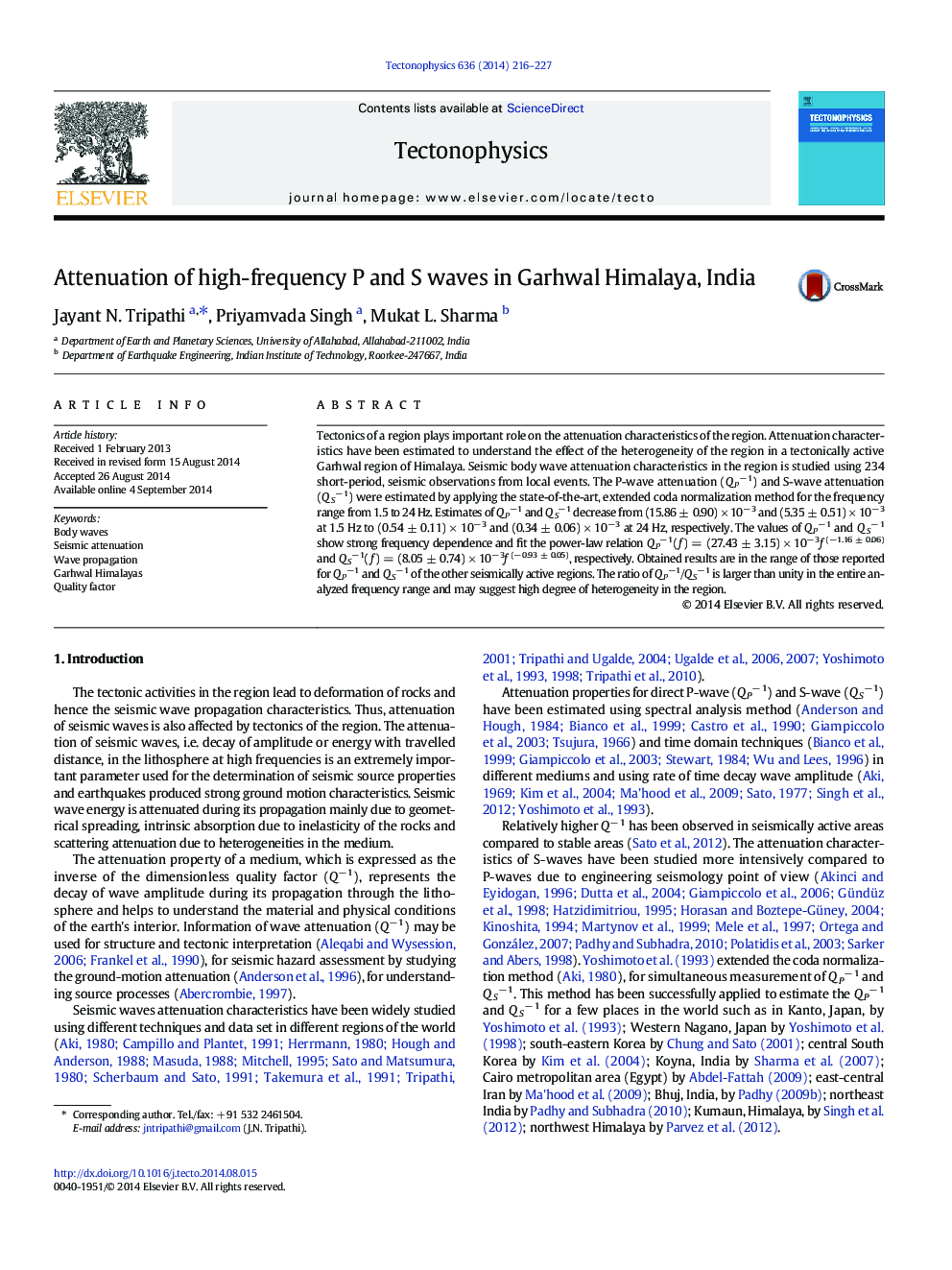| Article ID | Journal | Published Year | Pages | File Type |
|---|---|---|---|---|
| 4691799 | Tectonophysics | 2014 | 12 Pages |
•Attenuation properties of seismic P- and S-waves are estimated in the Garhwal region.•It is highly seismic potential and tectonically active region of Himalayas.•Extended coda normalization method has been used to estimate Qp− 1 and Qs− 1.•The estimated parameters show high frequency dependent power-law characteristics.•Obtained estimates are compatible to other tectonic regions of the world.
Tectonics of a region plays important role on the attenuation characteristics of the region. Attenuation characteristics have been estimated to understand the effect of the heterogeneity of the region in a tectonically active Garhwal region of Himalaya. Seismic body wave attenuation characteristics in the region is studied using 234 short-period, seismic observations from local events. The P-wave attenuation (QP− 1) and S-wave attenuation (QS− 1) were estimated by applying the state-of-the-art, extended coda normalization method for the frequency range from 1.5 to 24 Hz. Estimates of QP− 1 and QS− 1 decrease from (15.86 ± 0.90) × 10− 3 and (5.35 ± 0.51) × 10− 3 at 1.5 Hz to (0.54 ± 0.11) × 10− 3 and (0.34 ± 0.06) × 10− 3 at 24 Hz, respectively. The values of QP− 1 and QS− 1 show strong frequency dependence and fit the power-law relation QP− 1(f) = (27.43 ± 3.15) × 10− 3f(− 1.16 ± 0.06) and QS− 1(f) = (8.05 ± 0.74) × 10− 3f(− 0.93 ± 0.05), respectively. Obtained results are in the range of those reported for QP− 1 and QS− 1 of the other seismically active regions. The ratio of QP− 1/QS− 1 is larger than unity in the entire analyzed frequency range and may suggest high degree of heterogeneity in the region.
